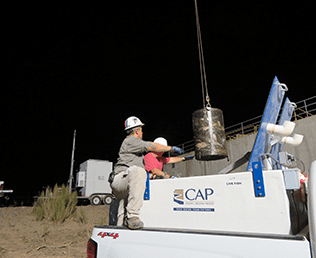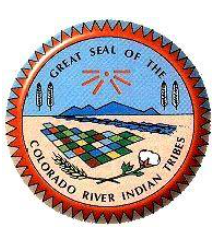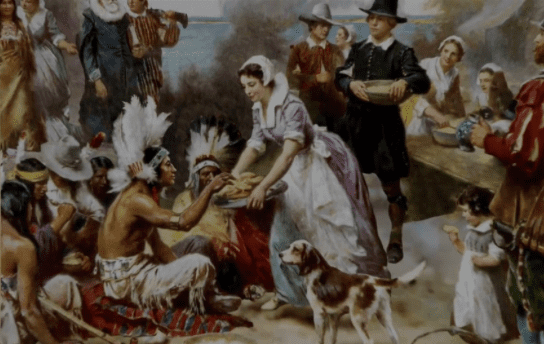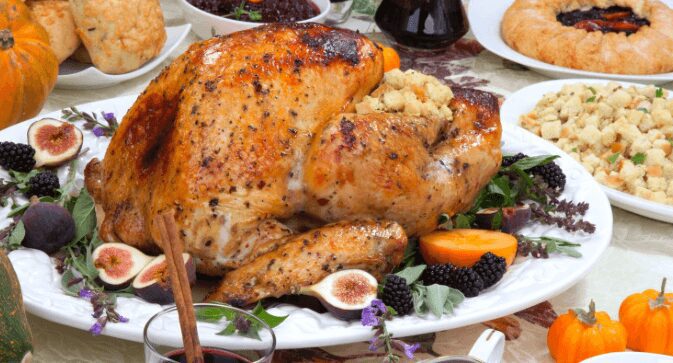1. Happy Thanksgiving

May this holiday allow all of us the opportunity to express our “Thanks” for all we have, all we do, for all of our friends, our family and those things that personal to you!
2. Foods That Make Us Drowsy After Eating. Eating a large Thanksgiving Dinner will do it. But eating milk, cheese and yogurt also will do it. Banana’s and nuts, late dinners, sugary and fatty indulgences all create drowsiness. Source: HealthPrep.com
3. Much Of The Food We Eat Contributes To Greenhouse Emissions And Consequentially, Global warming. The global food system contributes about a third of all human-caused greenhouse gas emissions. Transportation accounts for 11 percent of food-related emissions, with conventional grub traveling an average of 1,518 miles from farm to fork.

Just like solving climate change, improving our food system requires symbiotic relationships—between communities, farmers, transporters, and consumers who are committed to reducing carbon footprints and food prices. Source: SierraClub.com
4. Herding Fish In A Siphon! By Scott Bryan, Senior Biologist 11/14/2018 In 2018, CAP tackled the task of inspecting two of our larger siphons – the immense pipes that channel CAP water underneath the Agua Fria and Salt River beds. To facilitate these inspections, the water needed to be completely drained prior to entry, which is an operational challenge given the CAP system moves water 365 days per year.
The method to dry out these siphons involves first placing stop logs at both ends of the siphon to prevent water from entering at either end. Once the logs are in place, as much water as possible is evacuated from the siphon and released into the river. All that remains in the siphon is a small amount of water in the bottom, which is not enough to sustain fish that are trapped. Many of these fish have been stocked by CAP to control aquatic vegetation and nuisance insects, so we were determined to save as many of these valuable fish as possible.
We were determined to save as many fish as possible. At both sites, stop logs were dropped early in the morning, when fish were not seeking the shaded, cooler water of the siphon. Water was removed through the evacuation structure and the use of large pumps. When the water level was down to about two feet, we were ready to salvage the fish.
Agua Fria Siphon – three-man crews entered the siphon at about 7:30 p.m. and used a bag seine to “herd” the fish to one-end of the siphon. From there, fish were transferred to a custom fish basket with dip nets, then hoisted out through a man-hole. In the end, the fish removal process took less than three hours. We collected nearly 200 fish from the siphon, comprised mostly of catfish (70%), large common carp (25%), and some striped bass and bluegill (5%). Close to 150 catfish and carp were re-released into the canal. Many of the carp weighed between 20 and 40 pounds, while the biggest catfish was estimated to be about 8-10 lbs.

At Shallow Well, the crew entered at 8 a.m. and used dip nets to collect about 70 fish from the small area of remaining water (about 30 feet long and 1.5 feet deep). Common carp (45%), channel catfish (50%) and striped bass (5%) were collected in less than an hour, placed in the fish basket and hoisted to the surface. All of the catfish were placed in a fish hauling tank and released back into the canal downstream of the Salt-Gila Pumping Plant.
At Deep Well, the crew entered at noon and used a bag seine and dip nets to remove about 400 fish from the siphon. Some fish in this section of the siphon were huge! There were several grass carp that exceeded 36” in length and 40-60 lbs. The biggest striped bass were estimated to be nearly 30 lbs and two smallmouth bass were more than 5 lbs. In addition to those three species, we found common carp (60%), channel catfish (30%), bluegill (1%), threadfin shad (1%) and a single Sonora sucker (stocked in 2017 as part of a native fish tracking study). Because we were able to lower the water level to less than 18”, the removal of the 400 fish took only two hours.
For both siphon inspections, the upfront planning and the support of so many various work groups helped make this “herding of fish” a huge success!
5. Colorado River Indian Tribe (CRIT) Offers Arizona 50,000 Acre-Feet Of Water For 3-Years. A Native American tribe in western Arizona is offering the state water to help shore up Lake Mead. It would be 50,000 acre-feet of water each year for three years, starting in 2020.

An acre foot is enough water to cover an acre of land with a foot of water, or 325,851 gallons.
In exchange for the water, the Colorado River Indian Tribes in Parker, Arizona, is asking for $250 per acrefoot. That totals $37.5 million spread over three years.
The CRIT would fallow farmland in order to conserve the water on Lake Mead.
“It’s gonna sit up in Lake Mead [because] we don’t have the authority — none of the mainstem tribes on the Colorado River have the authority to transfer water,” said CRIT Chairman Dennis Patch. “That has to take a Congressional act and that’s what we’re asking for, too.”
Securing congressional legislation to lease or sell water, however, is difficult and more of a longer-term goal of the CRIT.
Patch said this proposal will help with the so-called Drought Contingency Plan, an expanded plan to cut back on water deliveries to deal with shortage. A shortage declaration from the Bureau of Reclamation is more likely than not in 2020. Patch said CRIT water that stays on the Lake could free up other water for mitigation of other users facing cutbacks, like Pinal County farmers.
The CRIT, which has land on both the Arizona and California sides of the state border, has 662,000 acre-feet of Colorado River allocation in Arizona and 57,000 acre-feet in California.
Chairman Dennis Patch said his Tribe’s high priority water rights means it can help the state in the DCP process.
“Arizona can have what it needs and we can have our needs met too,” Patch said. “Everyone wants [long] economic sustainability and the Tribes are no different.”
Water stakeholders in Arizona are staring down a deadline to ink an internal deal before it can sign a finalized DCP with the six other Colorado River basin states and Mexico.
6. History of Thanksgiving. Thanksgiving Day is a national holiday in the United States, and Thanksgiving 2018 occurs on Thursday, November 22. In 1621, the Plymouth colonists and Wampanoag Indians shared an autumn harvest feast that is acknowledged today as one of the first Thanksgiving celebrations in the colonies. For more than two centuries, days of thanksgiving were celebrated by individual colonies and states. It wasn’t until 1863, in the midst of the Civil War, that President Abraham Lincoln proclaimed a national Thanksgiving Day to be held each November.
In September 1620, a small ship called the Mayflower left Plymouth, England, carrying 102 passengers—an assortment of religious separatists seeking a new home where they could freely practice their faith and other individuals lured by the promise of prosperity and land ownership in the New World. After a treacherous and uncomfortable crossing that lasted 66 days, they dropped anchor near the tip of Cape Cod, far north of their intended destination at the mouth of the Hudson River. One month later, the Mayflower crossed Massachusetts Bay, where the Pilgrims, as they are now commonly known, began the work of establishing a village at Plymouth.

Throughout that first brutal winter, most of the colonists remained on board the ship, where they suffered from exposure, scurvy and outbreaks of contagious disease. Only half of the Mayflower’s original passengers and crew lived to see their first New England spring. In March, the remaining settlers moved ashore, where they received an astonishing visit from an Abenaki Indian who greeted them in English. Several days later, he returned with another Native American, Squanto, a member of the Pawtuxet tribe who had been kidnapped by an English sea captain and sold into slavery before escaping to London and returning to his homeland on an exploratory expedition. Squanto taught the Pilgrims, weakened by malnutrition and illness, how to cultivate corn, extract sap from maple trees, catch fish in the rivers and avoid poisonous plants. He also helped the settlers forge an alliance with the Wampanoag, a local tribe, which would endure for more than 50 years and tragically remains one of the sole examples of harmony between European colonists and Native Americans.
In November 1621, after the Pilgrims’ first corn harvest proved successful, Governor William Bradford organized a celebratory feast and invited a group of the fledgling colony’s Native American allies, including the Wampanoag chief Massasoit. Now remembered as American’s “first Thanksgiving”—although the Pilgrims themselves may not have used the term at the time—the festival lasted for three days. While no record exists of the historic banquet’s exact menu, the Pilgrim chronicler Edward Winslow wrote in his journal that Governor Bradford sent four men on a “fowling” mission in preparation for the event, and that the Wampanoag guests arrived bearing five deer. Historians have suggested that many of the dishes were likely prepared using traditional Native American spices and cooking methods. Because the Pilgrims had no oven and the Mayflower’s sugar supply had dwindled by the fall of 1621, the meal did not feature pies, cakes or other desserts, which have become a hallmark of contemporary celebrations.
In 1817, New York became the first of several states to officially adopt an annual Thanksgiving holiday; each celebrated it on a different day, however, and the American South remained largely unfamiliar with the tradition. In 1827, the noted magazine editor and prolific writer Sarah Josepha Hale—author, among countless other things, of the nursery rhyme “Mary Had a Little Lamb”—launched a campaign to establish Thanksgiving as a national holiday. For 36 years, she published numerous editorials and sent scores of letters to governors, senators, presidents and other politicians. Abraham Lincoln finally heeded her request in 1863, at the height of the Civil War, in a proclamation entreating all Americans to ask God to “commend to his tender care all those who have become widows, orphans, mourners or sufferers in the lamentable civil strife” and to “heal the wounds of the nation.” He scheduled Thanksgiving for the final Thursday in November, and it was celebrated on that day every year until 1939, when Franklin D. Roosevelt moved the holiday up a week in an attempt to spur retail sales during the Great Depression. Roosevelt’s plan, known derisively as Franksgiving, was met with passionate opposition, and in 1941 the president reluctantly signed a bill making Thanksgiving the fourth Thursday in November.

Although the American concept of Thanksgiving developed in the colonies of New England, its roots can be traced back to the other side of the Atlantic. Both the Separatists who came over on the Mayflower and the Puritans who arrived soon after brought with them a tradition of providential holidays—days of fasting during difficult or pivotal moments and days of feasting and celebration to thank God in times of plenty.
As an annual celebration of the harvest and its bounty, moreover, Thanksgiving falls under a category of festivals that spans cultures, continents and millennia. In ancient times, the Egyptians, Greeks and Romans feasted and paid tribute to their gods after the fall harvest. Thanksgiving also bears a resemblance to the ancient Jewish harvest festival of Sukkot. Finally, historians have noted that Native Americans had a rich tradition of commemorating the fall harvest with feasting and merrymaking long before Europeans set foot on their shores.
